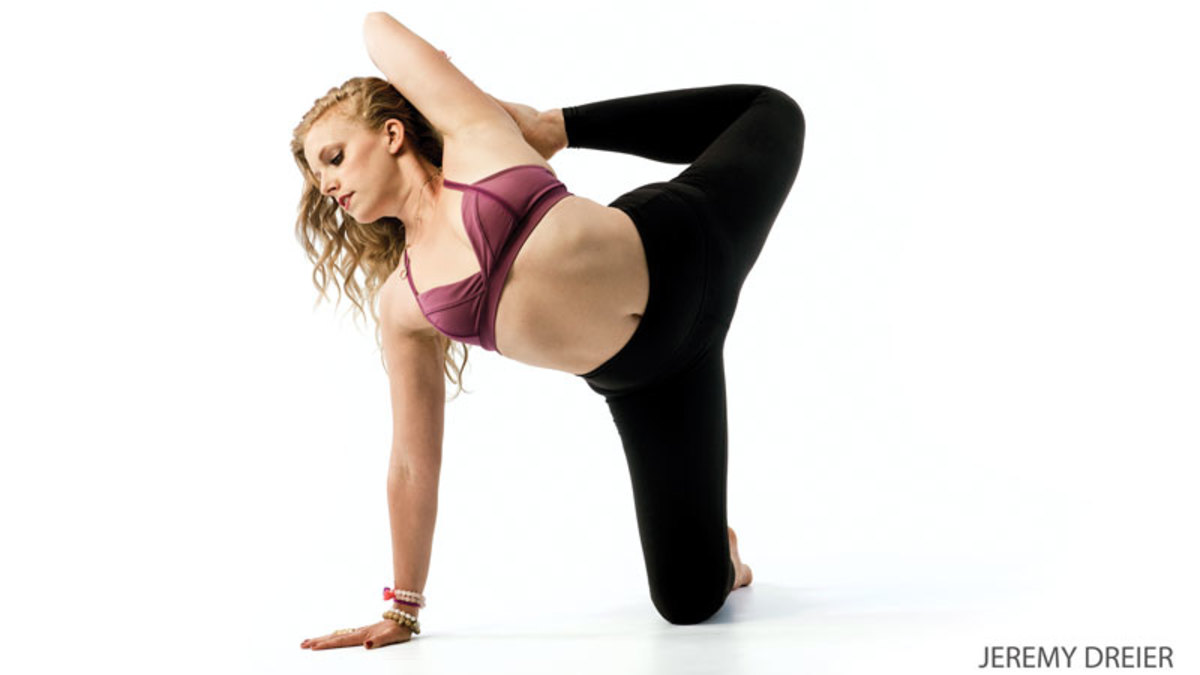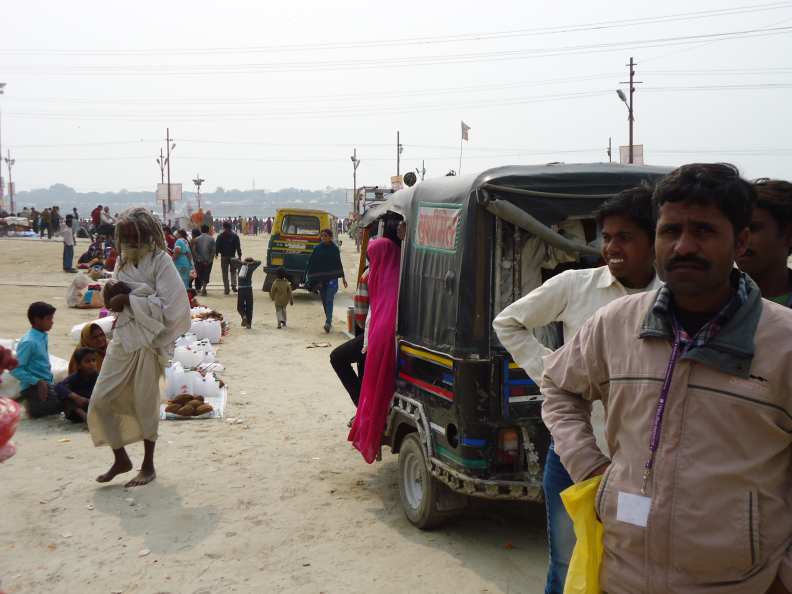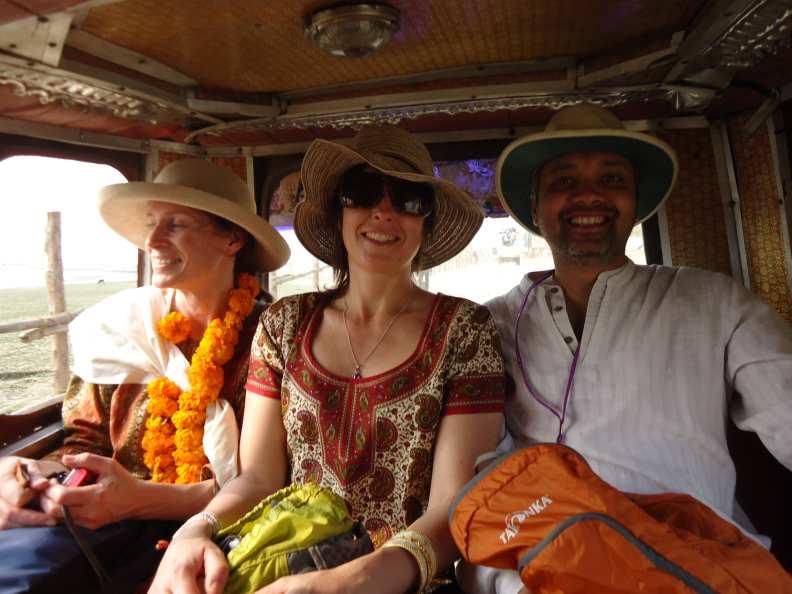Yoga Nation: How did the book do?
Neal Pollack: It wasn’t a best seller except for a couple of random weeks in a couple of random cities, and it hasn’t sold massive quantities, but it’s found an audience. The people who like it seem to have a lot of enthusiasm for it. So as much as I would have liked to have been a massive best seller that hasn’t really happened and I don’t see that happening.
YN: There’s always Russia. [Stretch came out in Russia, June 2011.]
NP: There’s always Russia. But I’m not going to count on that. It’s done as well as you can really expect a comic yoga memoir by a stoner guy to do.
And I’m being asked to go to other cities to do workshops. I’m going to New Orleans and Portland.
YN: What kind of workshops?
NP: I don’t know yet. That’s the thing, see: I’m a certified yoga instructor, through Richard Freeman last summer, but I haven’t taught a lot and I don’t have a ton of confidence in my ability as an asana instructor.
I certainly can’t talk about pranayama for three hours. Nor would anyone want me to. So I have to figure out what to teach.
I could barely stay awake during my teacher training because I was so tired from all the exercise. The physical stuff doesn’t come easy to me. I have a lot of alignment problems.
I’ll just have to be as honest with people as possible, say, listen, I’m not a master. I can’t do an entire 3-hour workshop on floating, you know what I mean?
YN: Teach to your strength right?
NP: Well let’s put it this way: when I assist my teacher in class, I drop people sometimes.
YN: There is a tradition of that.
NP: I can never figure out where to stand. No matter how many times people tell me, I can’t remember. And I’m sober when I’m getting the instruction.
YN: How was it studying with Richard Freeman?
NP: I have so much respect for him I can barely even begin to discuss it. He’s such a well-rounded human, so intelligent, and such physical ability. He seems inapproachable at first, but if you spend a month with him you realize that he’s sweet and kind. He just exists on a different plane some times.
He understands the practice deeply on many different levels. He’s the only person who’s explained yoga in a way that makes full sense to me. His language is so elevated and poetic. And he also mocks yoga culture in a very subtle and intelligent way that I appreciate. It was like I went to yoga college.
I went there with a blown out hamstring. Everyone kept saying you’re learning all these important lessons right now, and I was like, what the fuck are you talking about? I just want to bend forward.
YN: Is your hamstring better?
NP: Richard and his wife Mary when they saw that I couldn’t walk and saw that I had to go to the emergency room one day because I was so injured they came up with a strengthening program for me. It involved a lot of squatting and campers pose, you know you look like a camper taking a dump.
So I did a lot of that while other people were throwing their legs behind their heads.
They showed me a great kindness in doing that. I knew I was kind of a problem child for them, but I was injured. I’m always injured. I’m injured right now.
YN: What do you have?
NP: I got an SI joint thing on my right side. It pops in and out. It’s kind of a constant nagging thing. I should really just go to acupuncture or something but money’s tight. I lost my health insurance in December so…you know. Gotta try to heal it through yoga.
YN: That sounds precarious.
NP: A lot of people have it a lot worse.
YN: Are you still practice at same studios as when you were writing Stretch?
NP: Yeah, not the same spaces but the same community. A lot of the people I was practicing with when I first moved to Los Angeles 5 1/2 years ago are still around and they are still my community.
I’ve tried fancier studios and fancier people and I always end up going back to where I started. People are nice and the teachers are good but Yoga Journal ain’t going to do a story on it—unless I write one!
I think that’s good because yoga should be practiced with friends in a trusted space where you feel like you’re cared for to some extent—but not over cared for. You don’t want to be smothered.
YN: So you still have a really regular practice.
NP: Oh, yeah. I practice 5 days a week, and then I try to meditate on the days I’m not doing asana.
YN: Why not do it every day?
NP: I figure if I do an asana practice then that’s my meditation, you know? I do it when I feel like it. I know that’s not really what you’re supposed to do but—who cares?!?! I want to keep the meditation channel of my mind open, but some days it gets past me.
I’m definitely committed to it because I know that if I stop doing it my body would break down and so would my mind. I remember what my life was like before I did it. Actually, my life was exactly the same before I did it but the way I perceived my life was much different.
YN: And that’s everything.
NP: And that’s everything because my life was actually exactly the same. Ups and downs, goods and bads, sickness and health, but everything was clouded by this film of crazy. Not eccentricity—and I’ve got bags of that in my personality—but the crazies are kinda much more under control.
YN: That’s what got you in trouble with McSweeney’s?
NP: What happened was my ego was driving the ship, and it caused me to say and do stupid things. I had certain expectations and when they wouldn’t get met Id’ lash out in various ways. I over relied on drugs. I still do drugs, but I put them in their proper place. I wasn’t skillful in the way I handled that success.
I was not happy with the way I was comporting myself in the world. I feel better about that now and I think yoga has a lot to do with it. Middle age might also have something to do with it, but I know a lot of middle-aged people who behave very badly.
YN: How would you characterize the LA yoga world? What’s the insider perspective?
NP: The city is so big you can’t really generalize. Yes, of course you have the trendy yoga studios on the west side that are a little over-reliant on the bhakti perhaps. Those are the ones that get a lot of attention in press and the big crowds.
YN: What’s the west side?
NP: Venice, Santa Monica. But there’s also a nice community of yoga intellectuals here. There’s Loyola Marymount. There are people who are studying the tradition in intelligent ways here. And I would characterize the scene here as not particularly toxic, pretty laid back.
I avoid the elements of it that are trendy and celebrity oriented and competitive. It’s like Paris in the 20s for yoga—there’s so much talent and so much hard work and great yoga history here. Indra Devi taught here in the 40s, I live 5-minute drive from the original Self-Realization Fellowship. If you’re looking for it, you can still find it.
YN: Is there anywhere else on your travels that you thought was a cool yoga place?
NP: Not really. Austin has some fun stuff going on but I have a soft spot for Austin. The yoga scene in New York although there’s a lot of good stuff going on is too rushed and too competitive for me. San Francisco suffers a bit from excessive bougie-ness.
But again every place I go I meet intelligent thoughtful people who are trying their best. And then sometimes I’ll run into a stupid trendy yoga class. But in some ways yoga self selects. And the people within yoga self select. I have no trouble finding those people.
I’ve made some dear, dear friends through yoga who—I know I can’t always count on them to show up on time, or to be available to hang out all the time—but I can always count on them as emotional or intellectual support. And I can’t say that for all friends from all walks of my life at all times.
YN: Reading the book it sounds like you had a lot of fun writing it.
NP: I was like a kid at a soda fountain. It was all new to me.
YN: That was probably the perfect perspective.
NP: I was gimlet-eyed. I had no preconceived notions about what I was going to encounter at all. And now I do. I try to retain some of that innocence every time I get on the mat, but it’s not always easy to do. But that’s what you’re trying to do—to see reality as it really is, every moment should seem like you’re a newborn opening his eyes for the first time. But for the purpose of the book I was having a blast. I was trying to write the book as much in real time as I could. And as authentically as I could.































